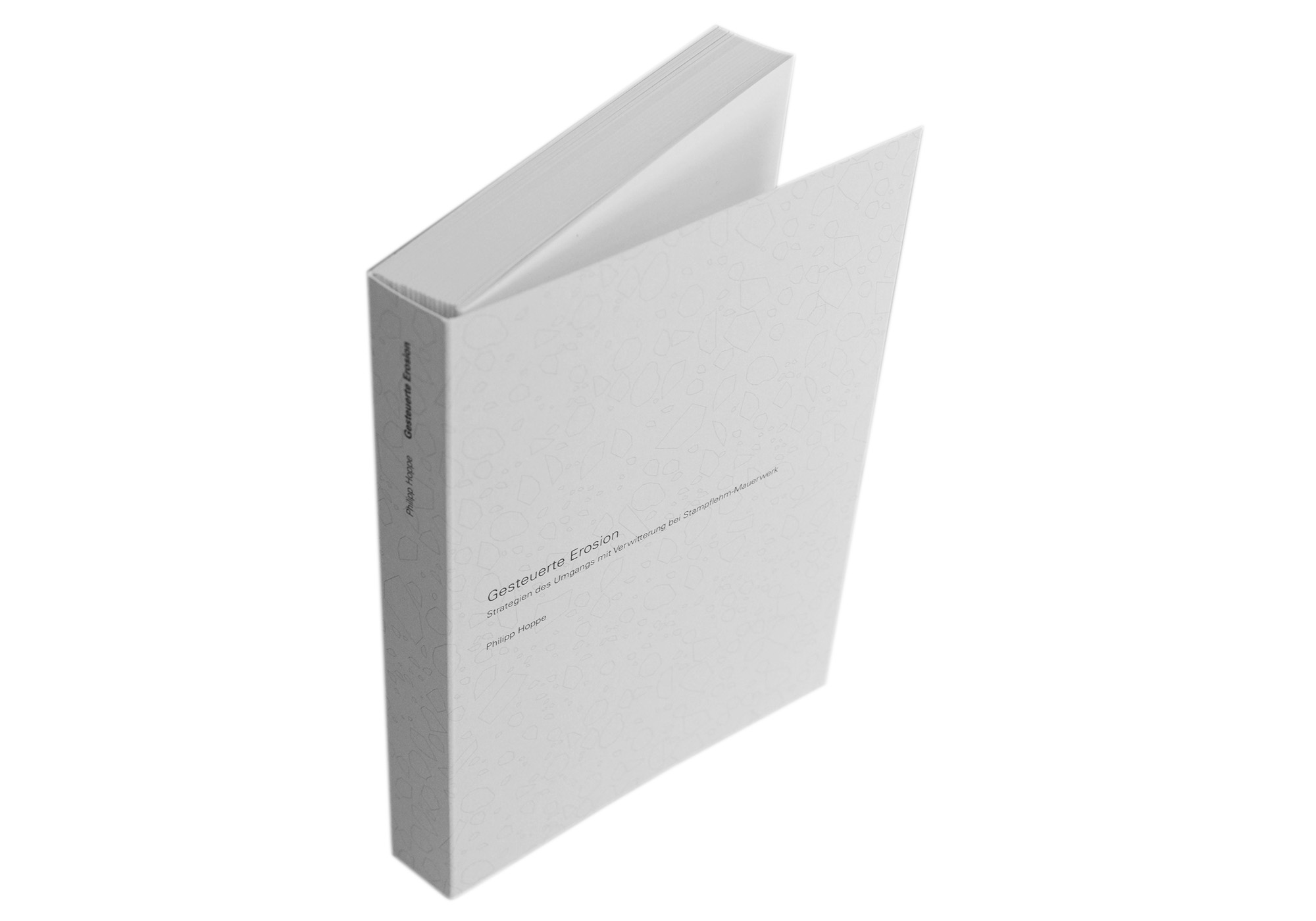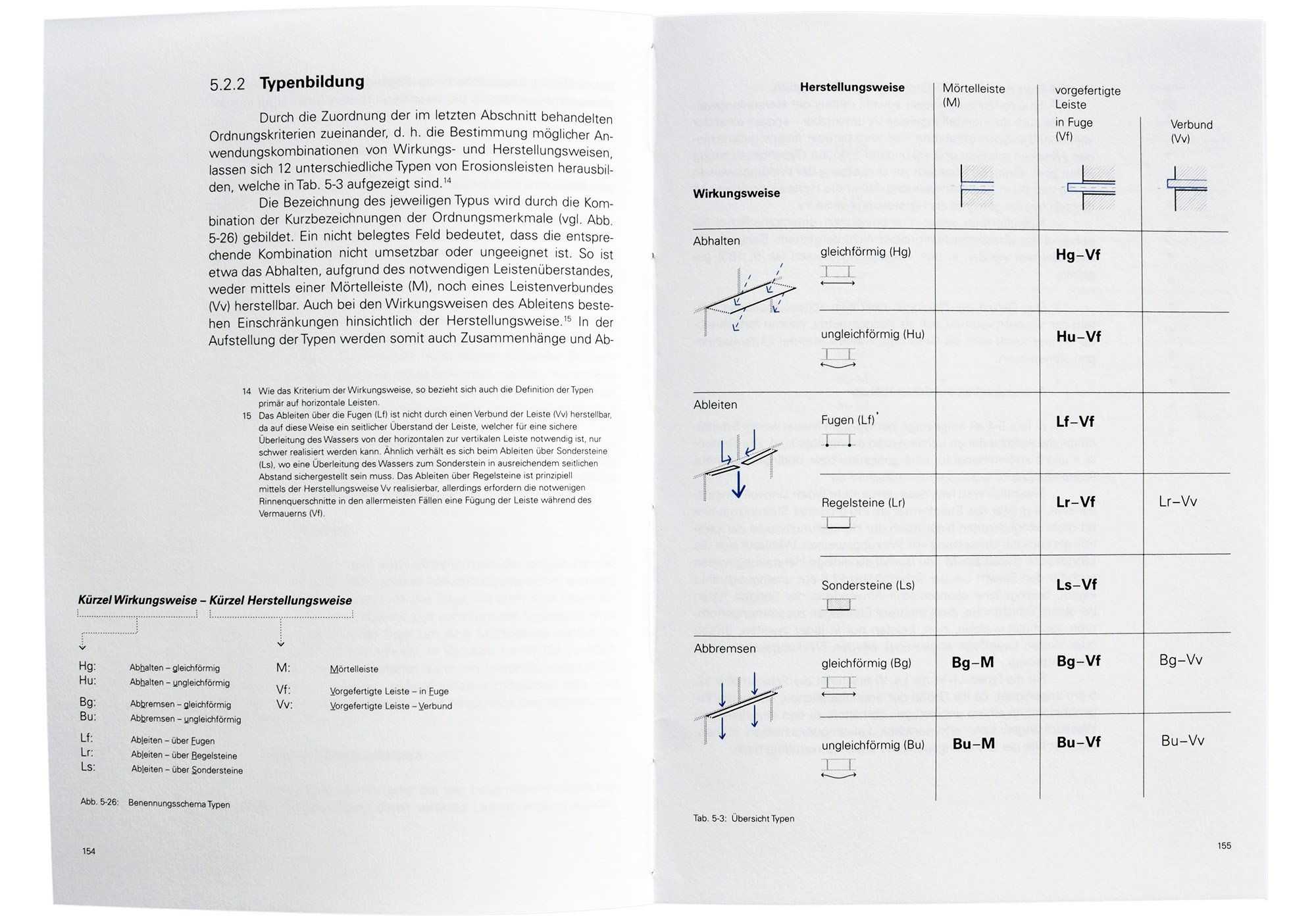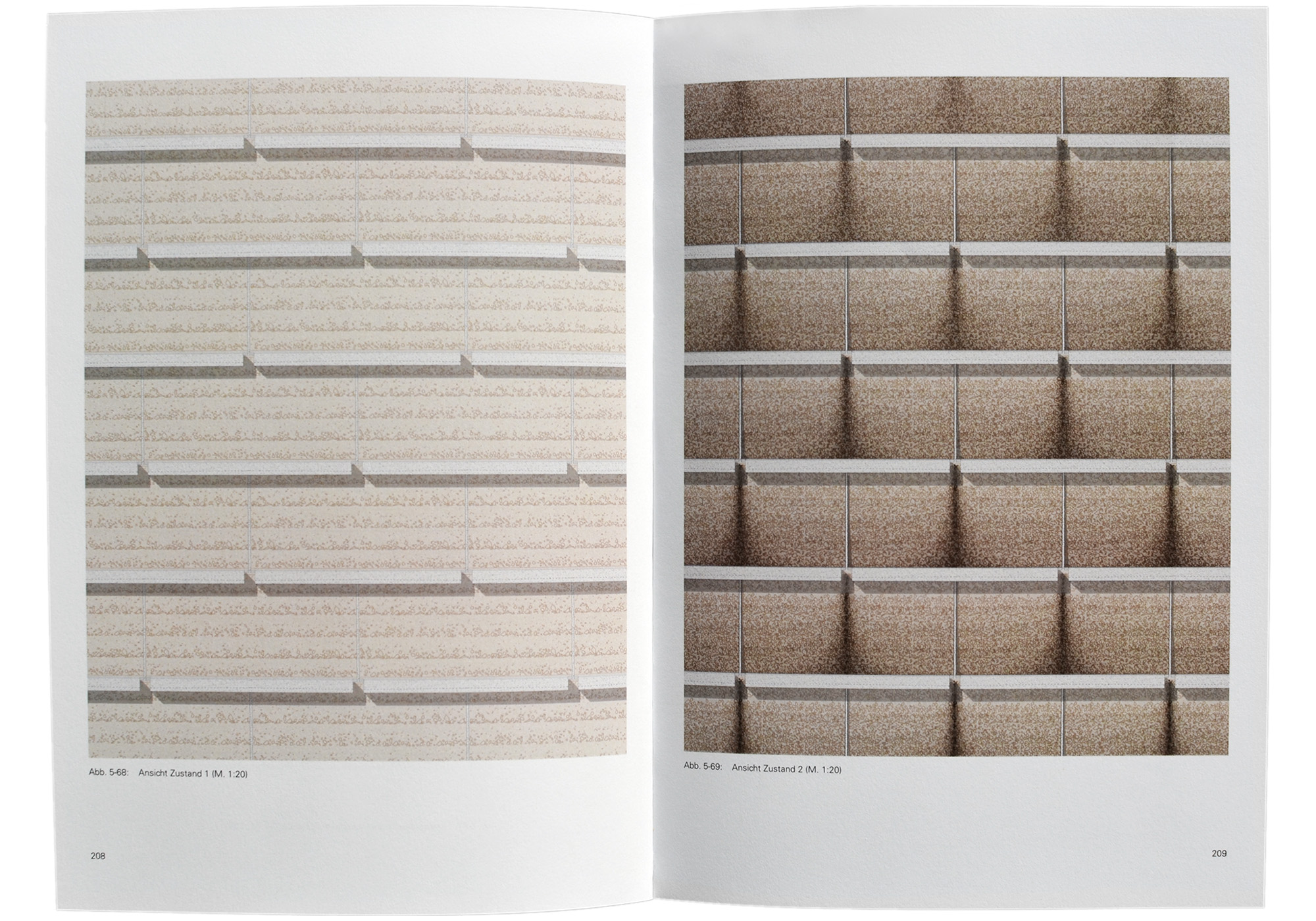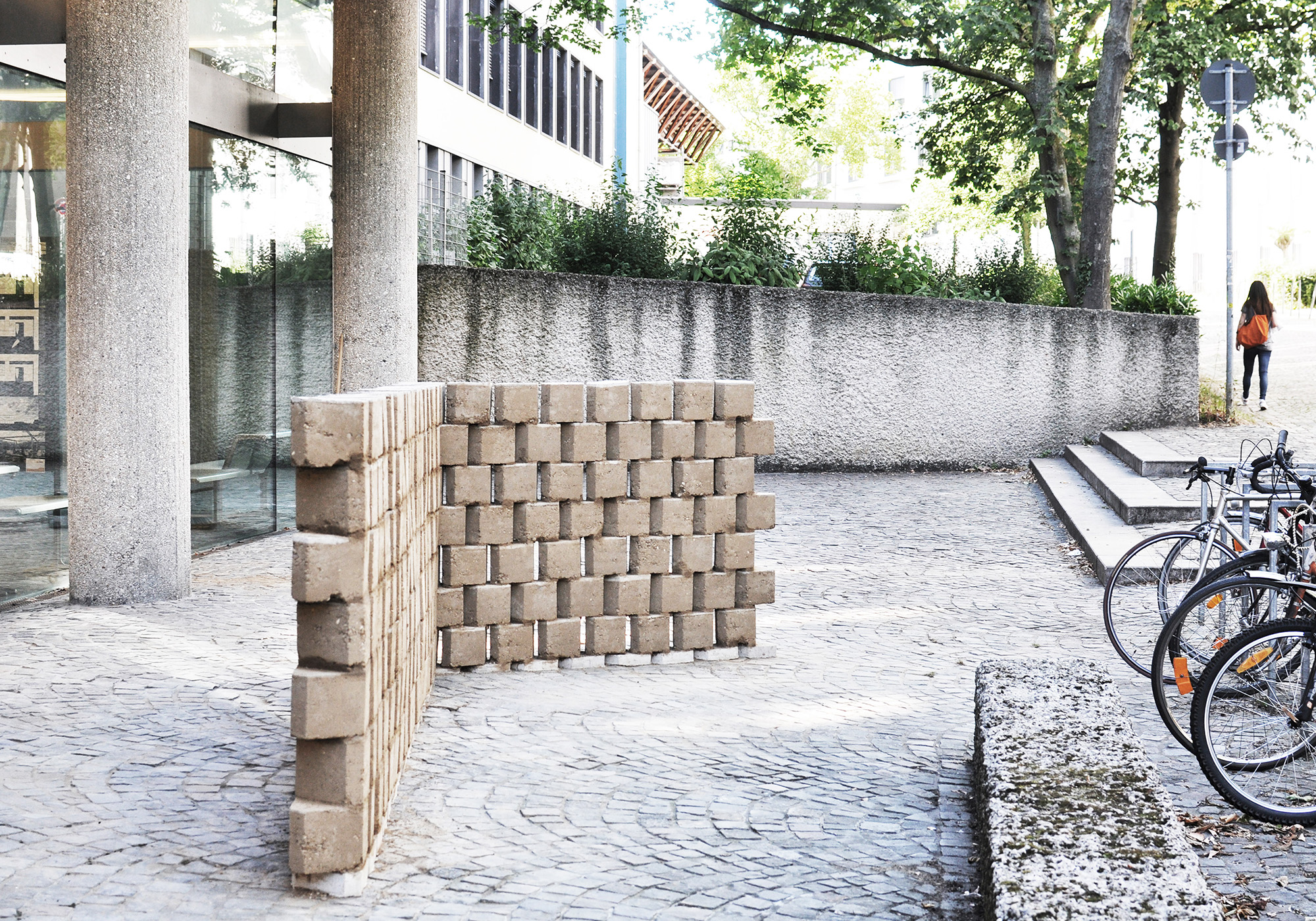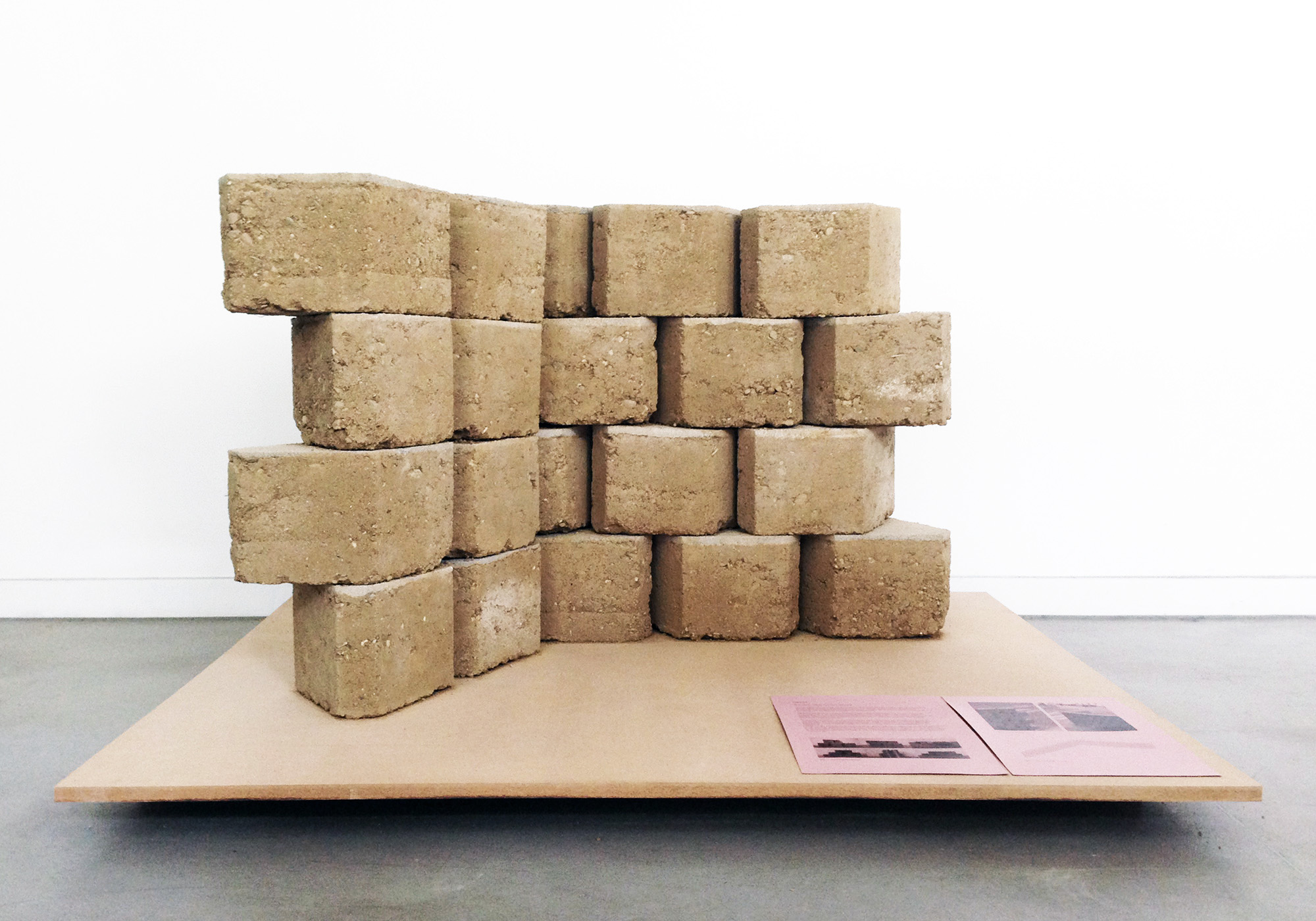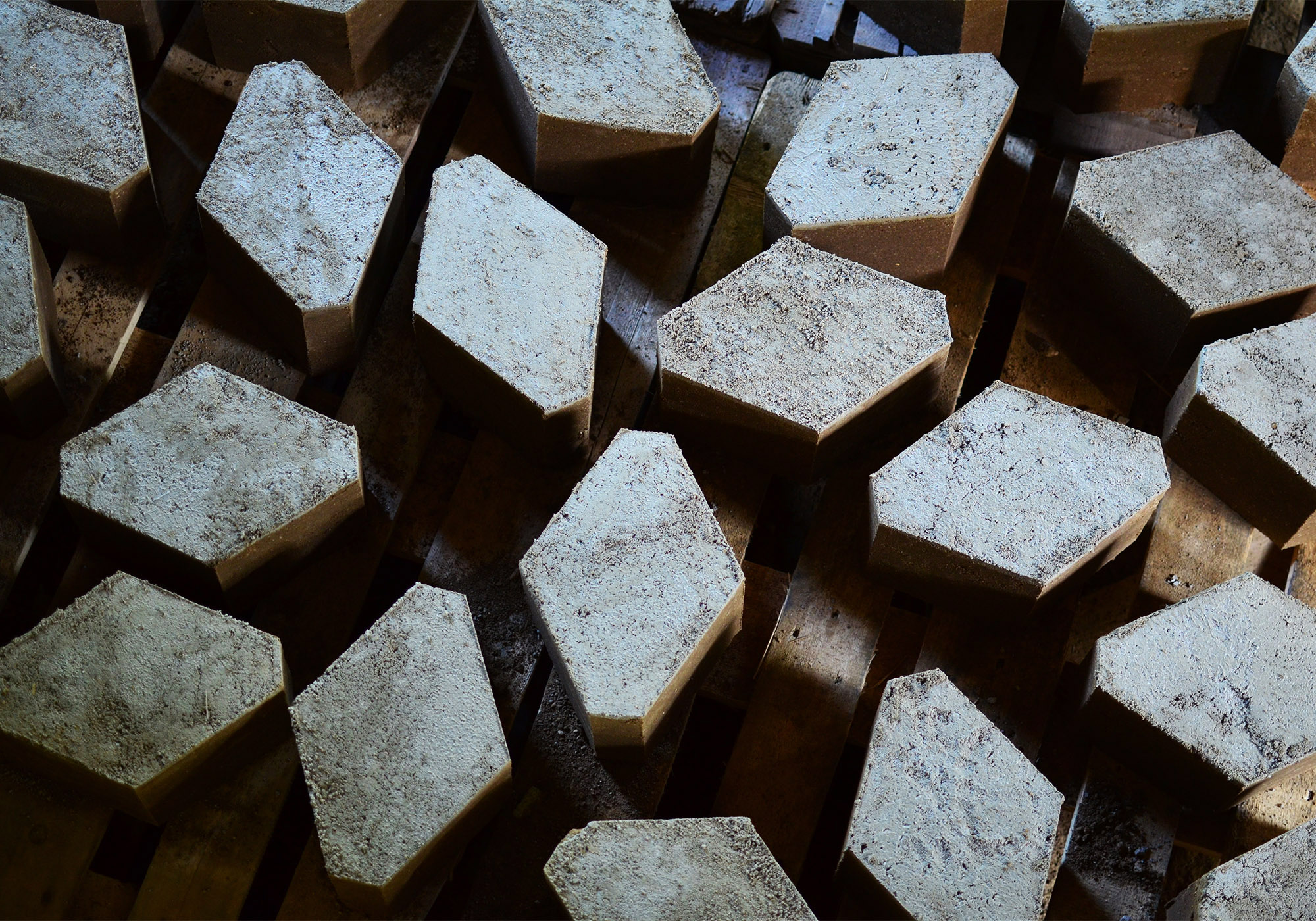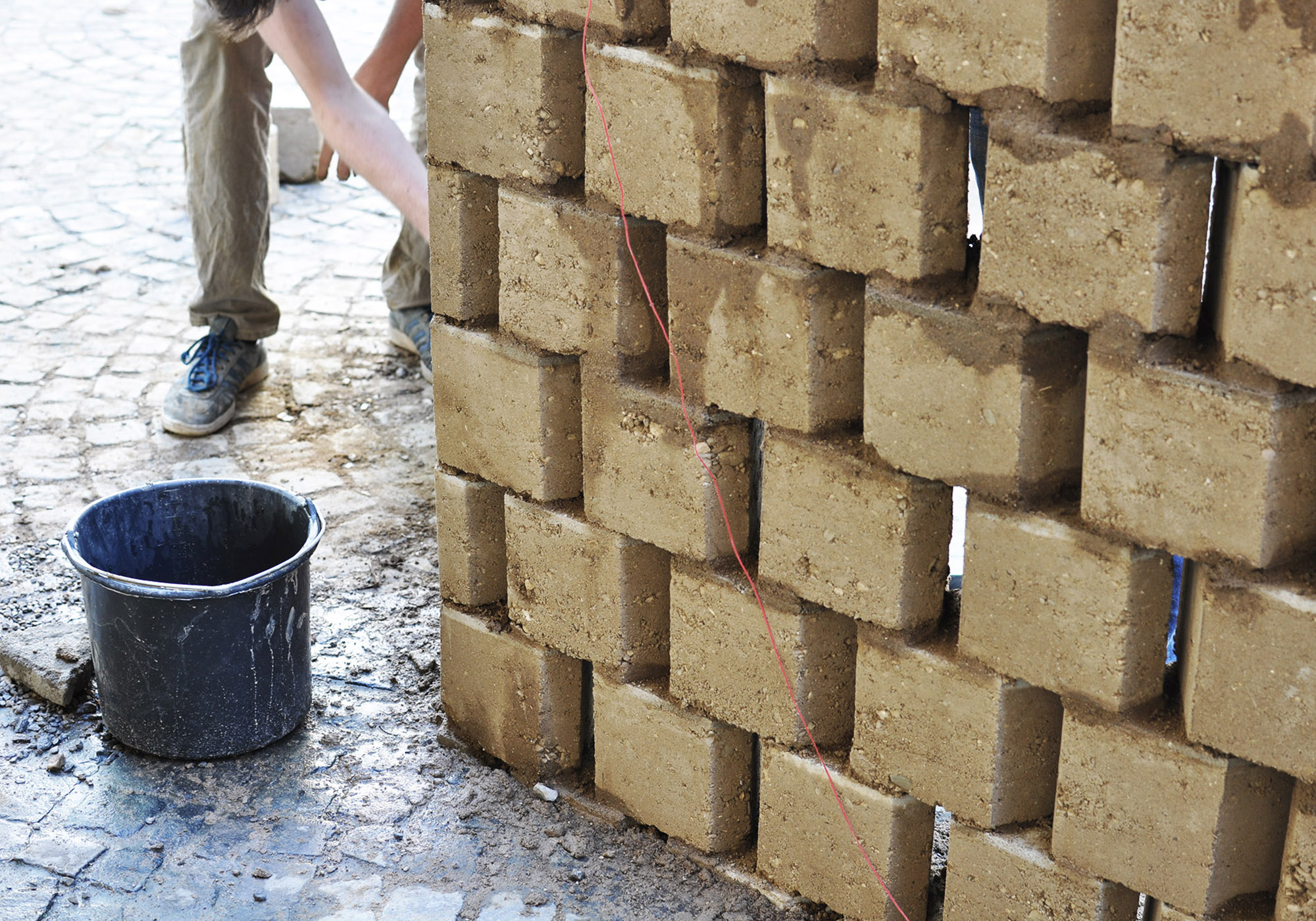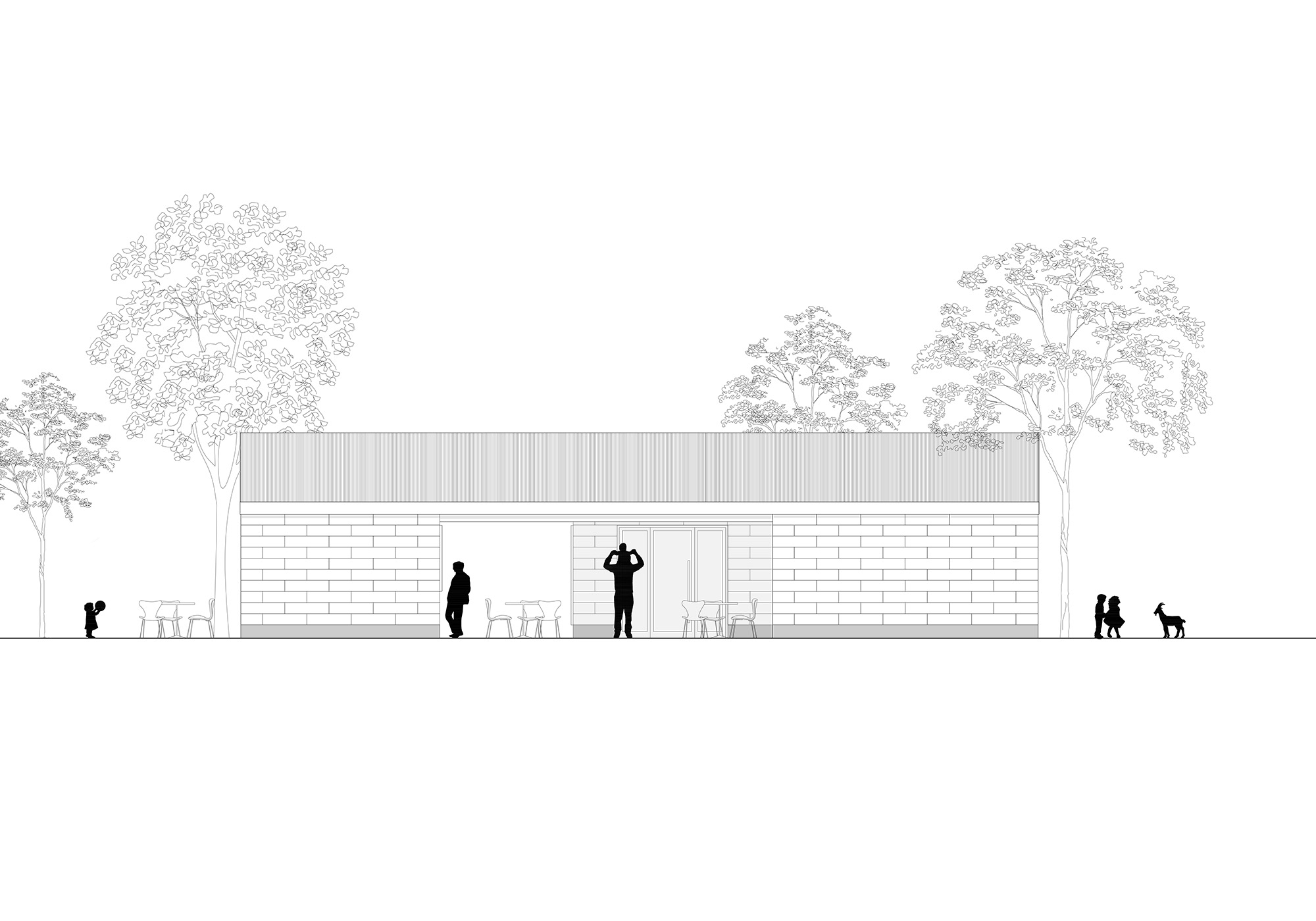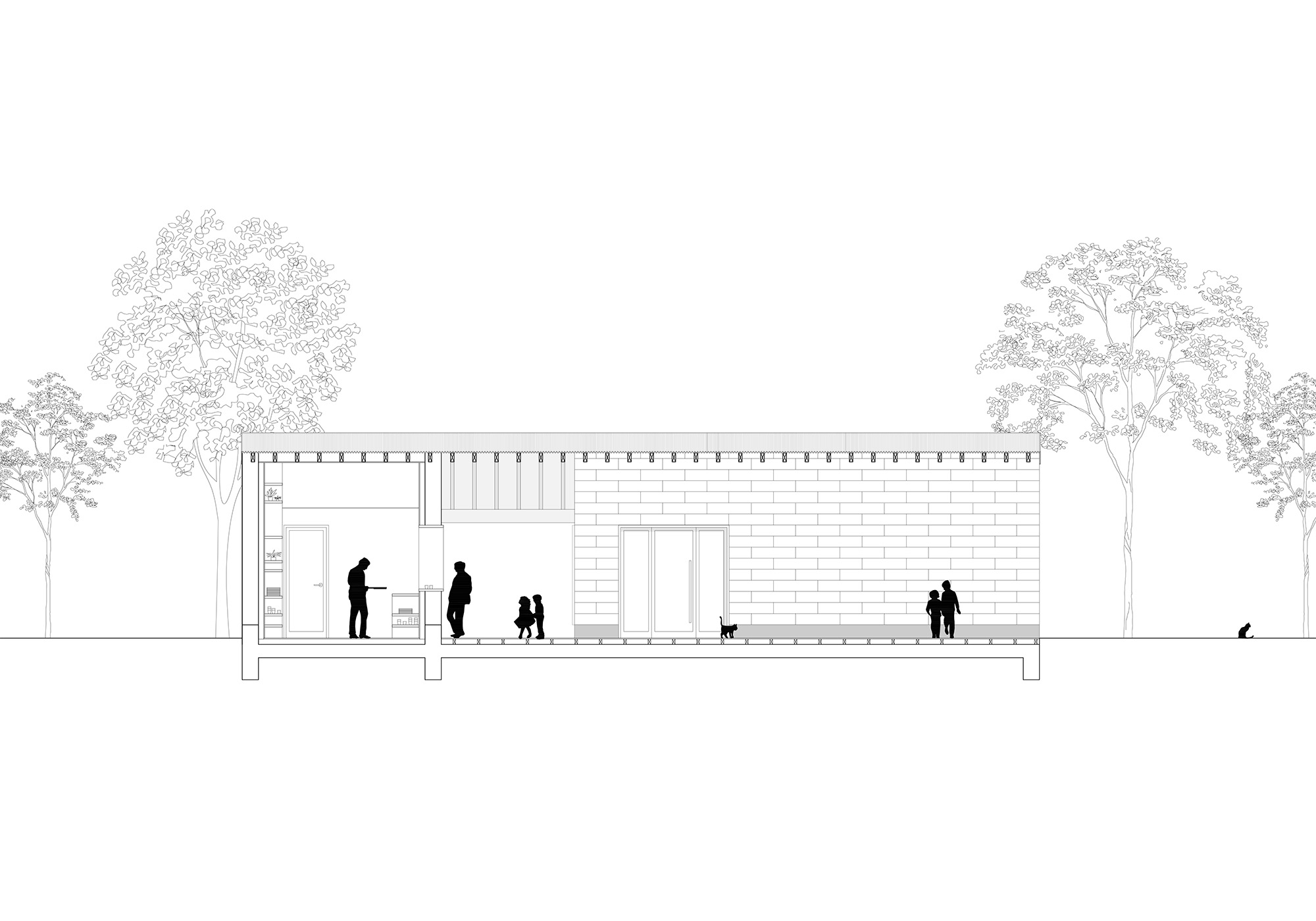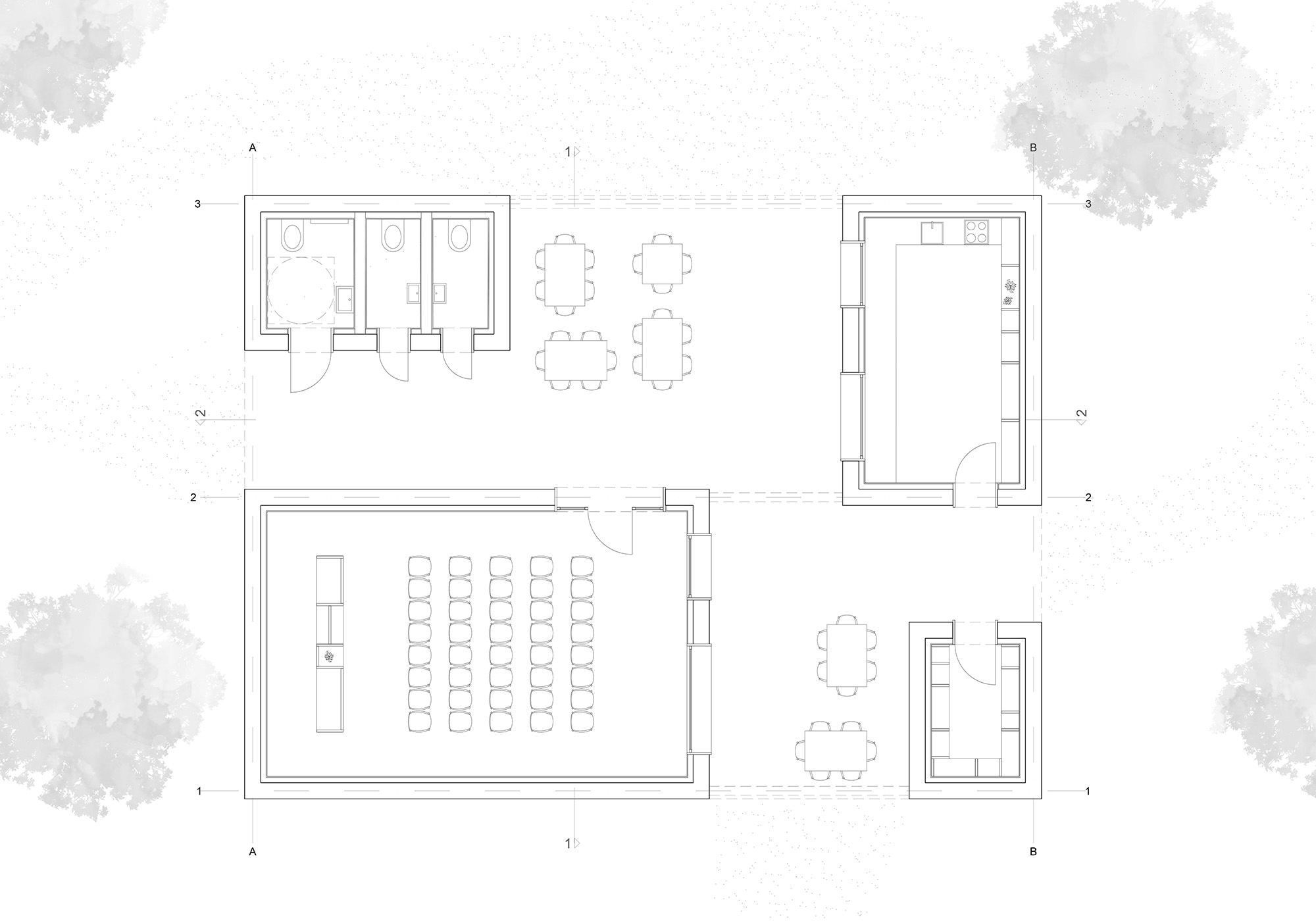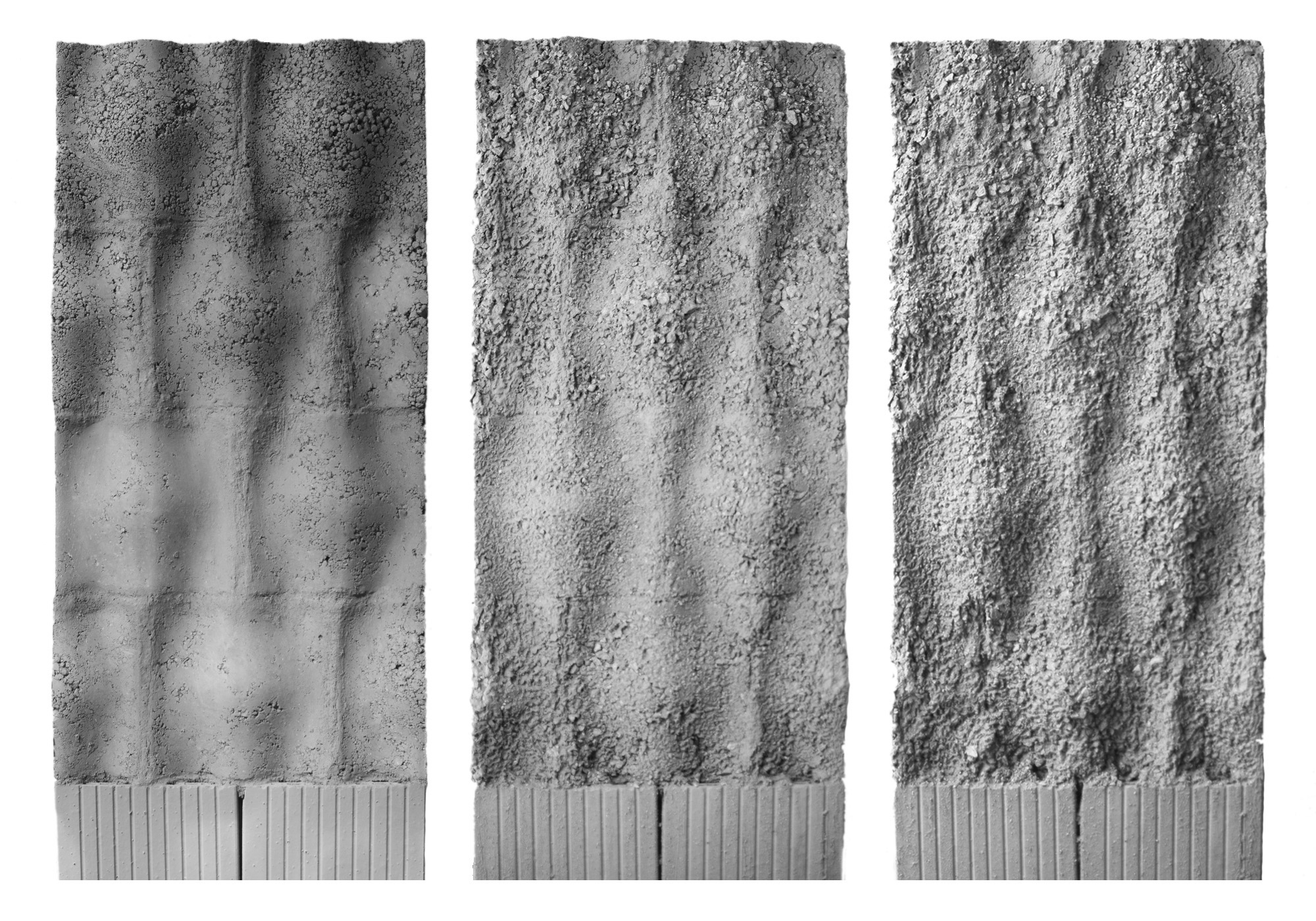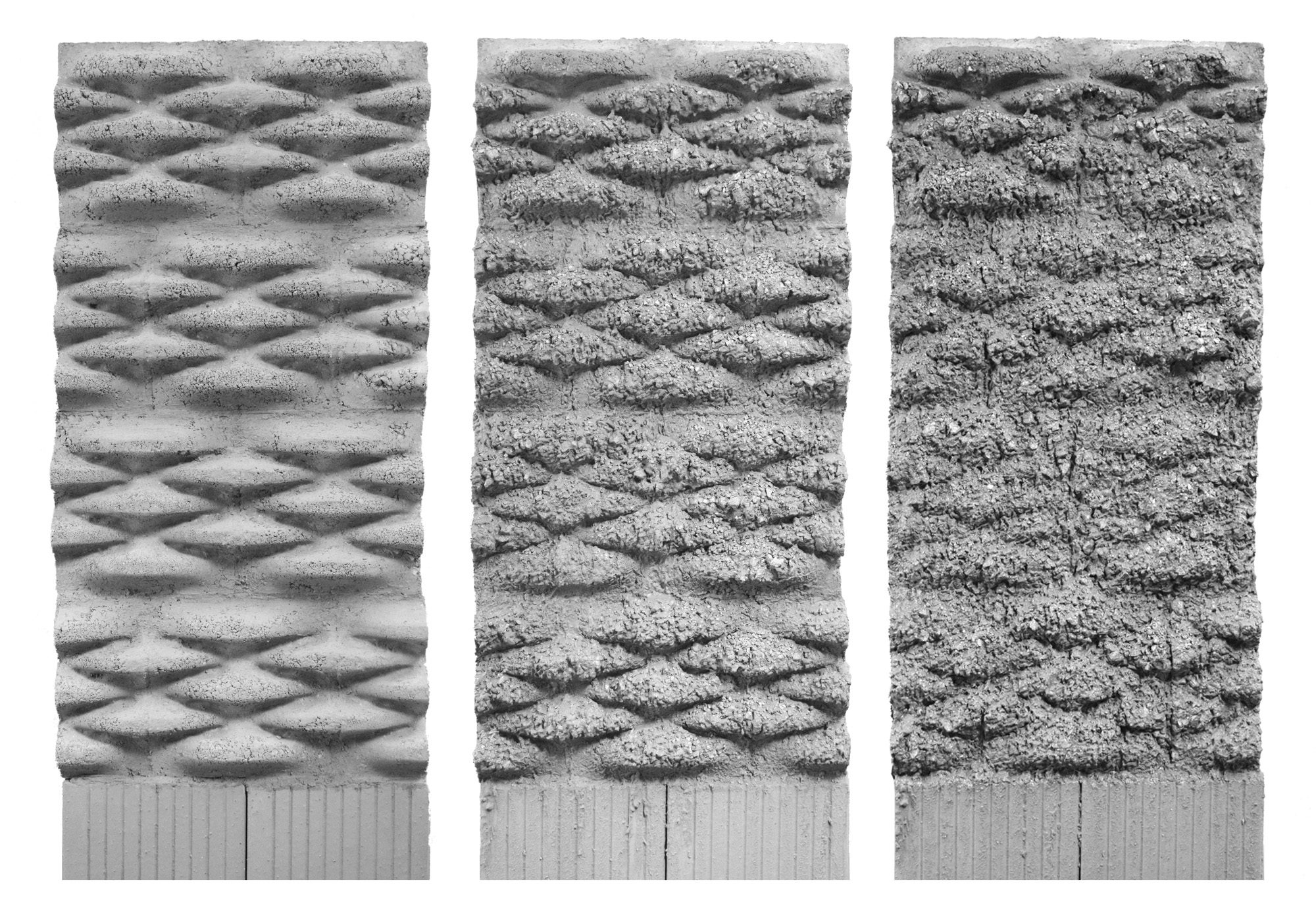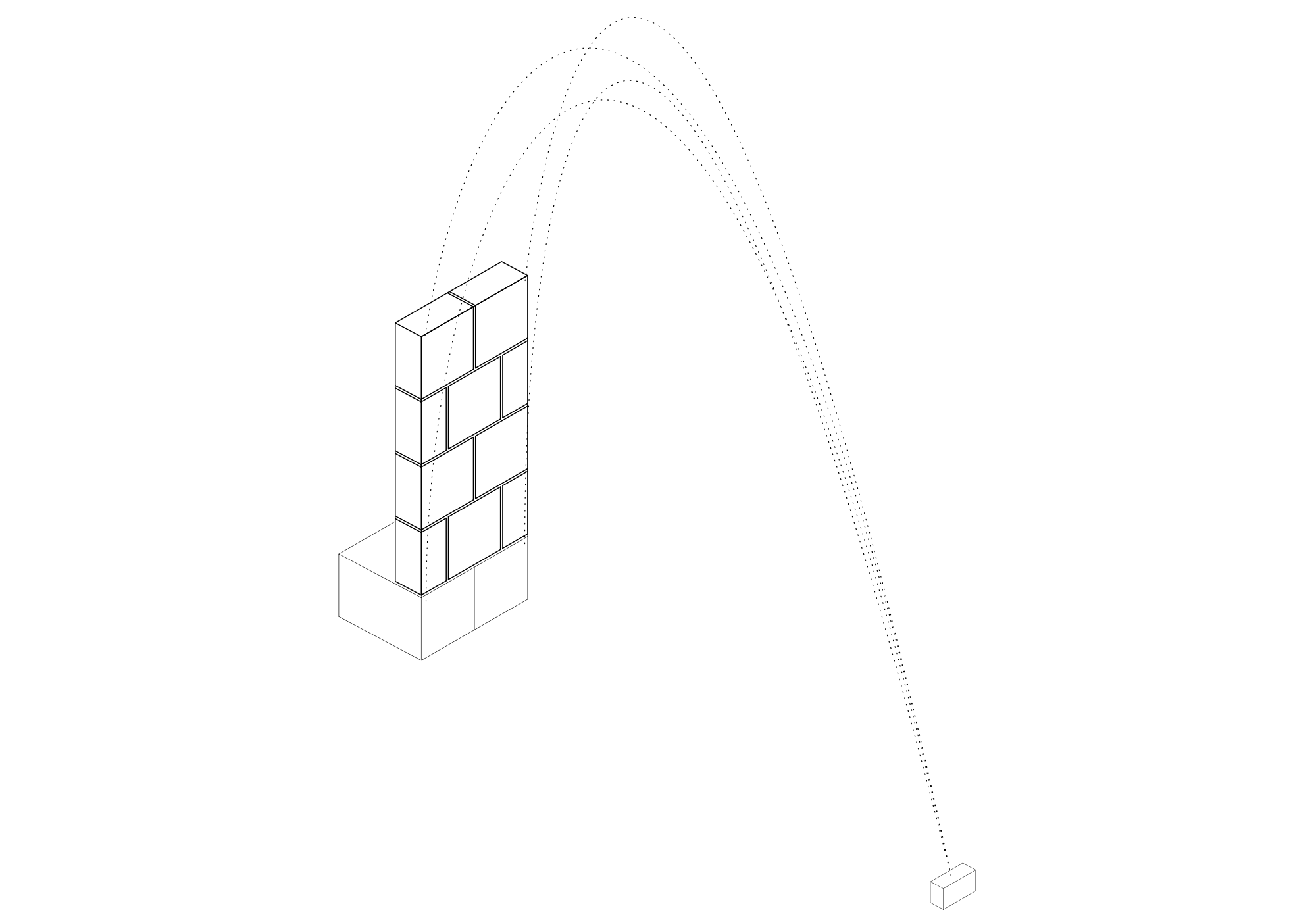 1 / 5
1 / 5 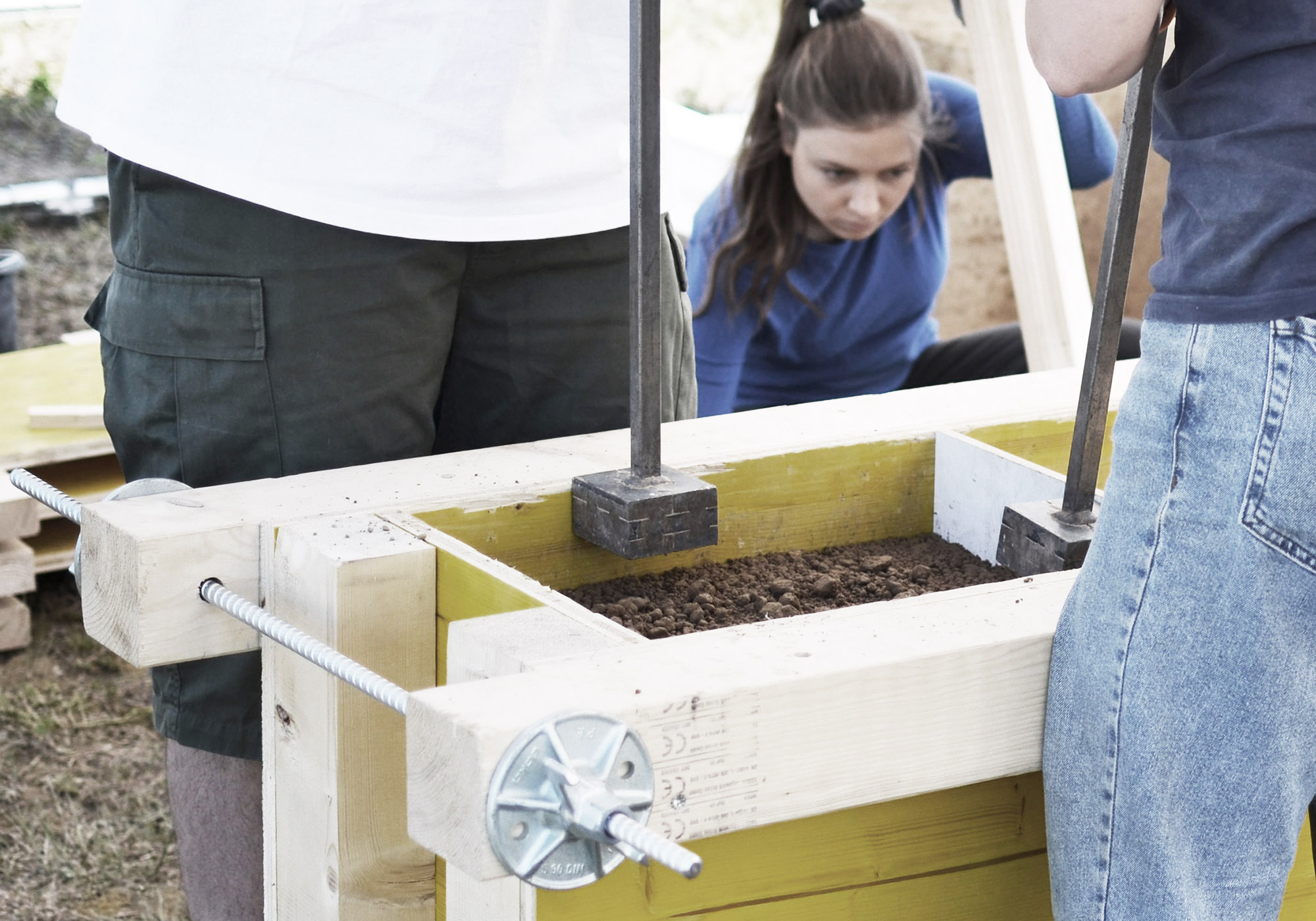 2 / 5
2 / 5 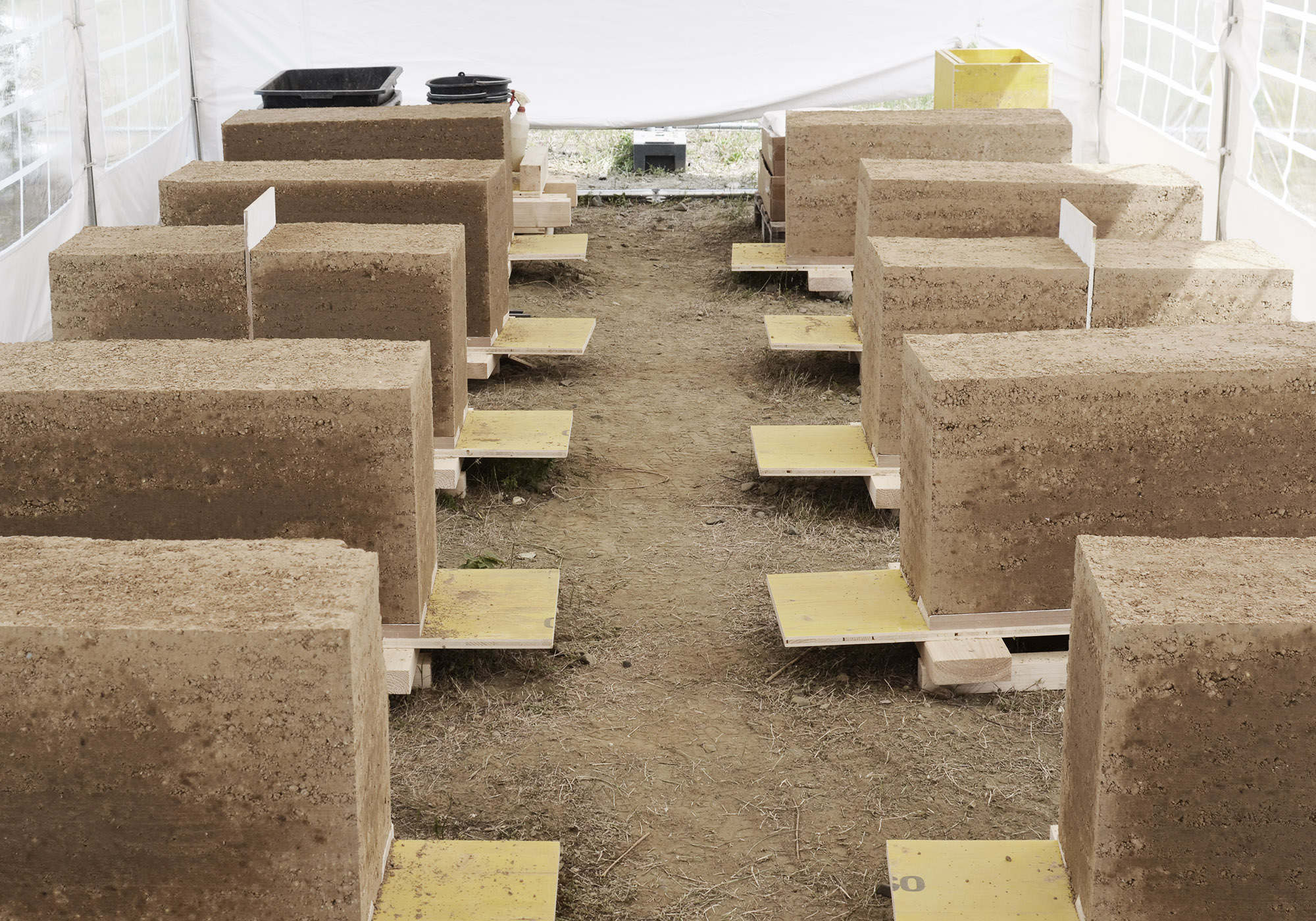 3 / 5
3 / 5 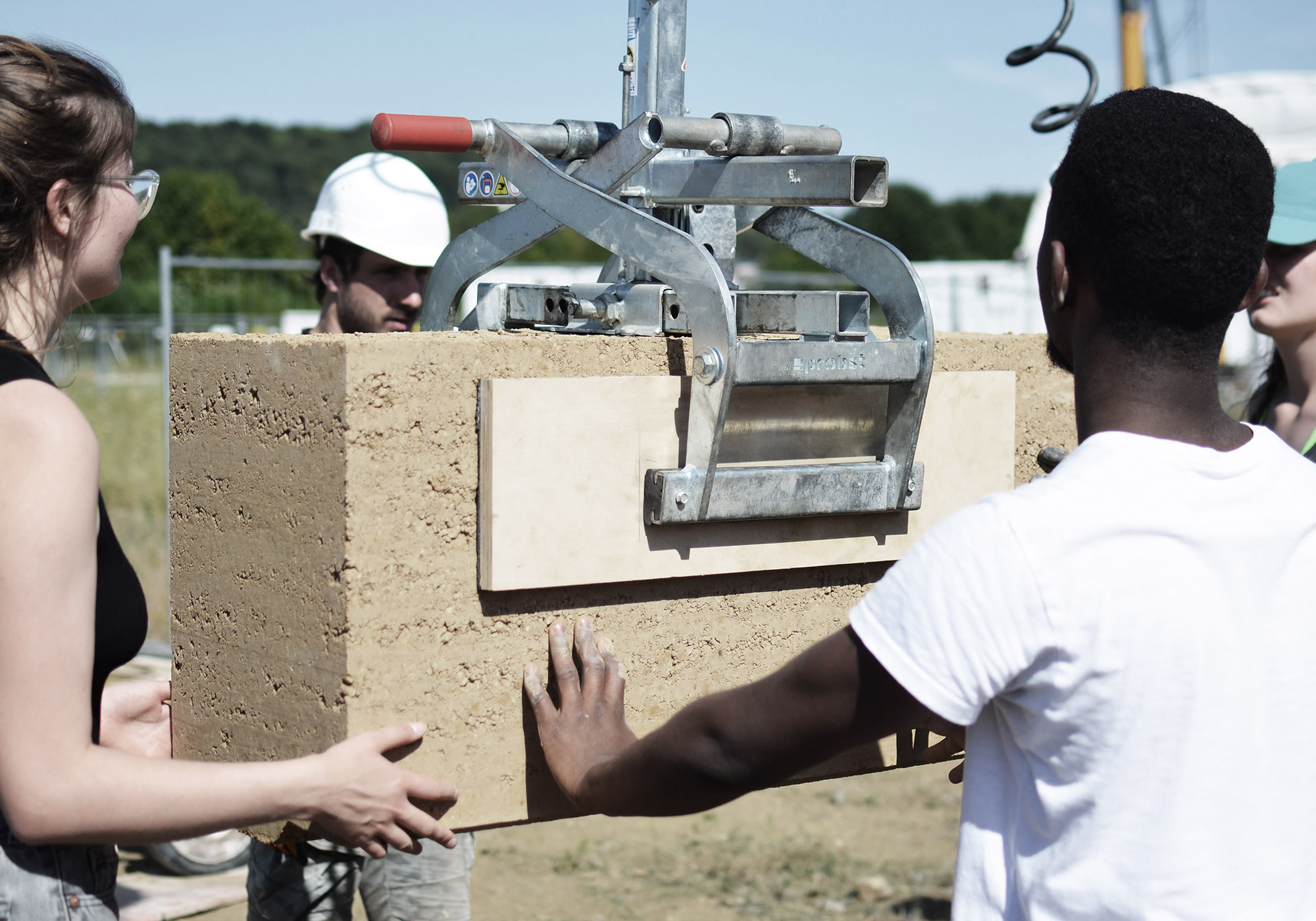 4 / 5
4 / 5  5 / 5
5 / 5
STEERED EROSION / DEMONSTRATORS
Research project
Chair of Building Construction, RWTH Aachen University, 2022–2023
The project builds on an earlier research project on rammed earth masonry and erosion control (see below) and tests results from this in practice for the first time.
Together with students from RWTH Aachen University, we realized two research demonstrators in the form of small wall pieces in the outdoor space. For this purpose, a "Pop-Up Factory" was erected on a brownfield site, where rammed earth blocks measuring 99x49x36.5 cm were prefabricated by hand. After drying, the blocks were joined to form the wall sections, using a mini crane with a gripper as the transfer device.
In addition to testing construction technology and process, the project investigates various erosion control techniques. For this purpose, we integrated wooden strips and boards into the horizontal masonry joints, which, for example, keep driving rain off the wall surface or act as erosion brakes.
Developed within the framework of Zukunft Bau Pop-Up Campus – sponsored by: German Federal Institute for Research on Building, Urban Affairs and Spatial Development (Bundesinstitut für Bau-, Stadt- und Raumforschung - BBSR), RWTH Aachen University, City of Aachen. Special Thanks to our industry partners CLAYTEC and DOKA.
STEERED EROSION
Doctoral Thesis
Faculty of Architecture, RWTH Aachen University, 2017–2022
Building on earlier research on rammed earth, the dissertation deals with erosion control measures for weathered rammed earth masonry. By means of theoretical, design-based and practical investigations, an overview of various functional and aesthetic potentials is provided. The core result of the thesis is the theory of steered erosion, which describes different ways of intervening in the erosion process as possibilities for adapting the degree of protection to local requirements as well as utilizing the special design-related quality of erosion.
RAMMED EARTH WALL
Design-Build workshop
Chair of Building Construction, RWTH Aachen University, 2015
As part of a seminar for Master’s students, we investigated the basics of building with small-format rammed earth blocks. Following on from a first part of the seminar and the study of various element geometries, an exemplary wall structure - consisting of 170 elements previously produced using individual formworks - was implemented as a temporary installation in front of the main entrance to the Faculty of Architecture.
Design shown above: Carmen Neuhaus, Lukas Schlüter and Leonie Woltermann
EARTH PAVILION
Design-Build-Project
Chair of Building Construction, RWTH Aachen University, 2019 –
The task in this project was the design of a pavilion building on the grounds of a municipal zoo, which was to provide a meeting room for small groups of visitors, a covered outdoor area, as well as a kiosk and ancillary rooms. Being an experimental building for the testing of rammed earth masonry, the rammed earth walls were only to be designed as self-supporting, while the roof structure rests on a wooden supporting structure.
Design shown above: Jana Mentges
EROSION STUDIES
Research project
Chair of Building Construction, RWTH Aachen University, 2016–2017
In a series of research seminars, we investigated strategies for reducing surface erosion in weathered rammed earth surfaces. Here, the focus was on strategies for braking vertical water runoff, such as by corrugating the surface or optimizing the surface texture. For each strategy, different implementation variants were considered and test wall sections were created for them. A subsequent rough simulation of the natural erosion process by artificial sprinkling allowed an evaluation in functional and aesthetic terms.
lehmlabor explores future-oriented potentials of earth as a building material. We investigate architectural aspects in the context of research and teaching and implement new findings in design and building practice.
Earth is ideally recyclable, can be used sustainably in a comprehensive sense, and has the potential to make an important contribution to reducing the ecological footprint of the building industry. In addition, it offers aesthetic qualities that raise awareness for sustainable, natural building.
lehmlabor was founded in 2021 by Philipp Hoppe in Cologne, Germany. Previously, Philipp worked as an architect for hg merz, Stuttgart, and Junya Ishigami, Tokyo, and was a Research and Teaching Associate at the Chair of Building Construction at RWTH Aachen University from 2013 to 2019. Since 2023, he is a Professor of Architecture at iu International University of Applied Sciences in Cologne.
Email
Instagram





